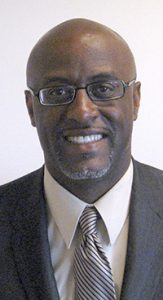EQUITY & STEM: AN INTERVIEW WITH DR. GREGORY KING, TUKWILA SCHOOL DISTRICT

Dr. Gregory King
The tours involved 1000 plus miles to numerous communities, schools, and cities across Washington. One of the most important components of those trips were the 80 ambassadors that signed up for this journey and chose to immerse themselves in this truly unique learning experience. Each person brought their own unique perspective to the themes we chose to explore. One of these ambassadors was Dr. Gregory King, Interim Chief Academic Officer and STEAM Executive Director of Tukwila School District.
I recently sat down with Dr. Gregory King to discuss his experiences around the Washington STEM Learning Tour. “To me the purpose of going was to see students of color getting opportunities to participate in STEM learning initiatives and finding ways to increase STEM in underrepresented groups,” Dr. King said.
“The whole key is to have equity and access [in education], but students have to see themselves in that process. If you’re trying to increase STEM literacy or get more kids of color to consider STEM fields, one of the best processes is to show students other people like them that are doing the work.” For Dr. King, that statement was embodied during the second day of the statewide tour at the Yakama Nation Cultural Center.
When we arrived at the Yakama Nation Cultural Center, we were given the opportunity to listen to a group of Toppenish High School students speak passionately about the projects they were involved with. One of the students had partnered with Heritage University Professor Michael Durst and received hands-on learning and training around solar hot water heaters. The ultimate goal of the project was to improve housing on the reservation for tribal members.
“The solar project is what stood out most for me because that was a direct partnership with a student and a professional in the industry. The question is, how do we duplicate that process?” Dr. King said that it was opportunities like these that allow the student to see him/herself learning and working in a capacity that he or she might not have otherwise seen. And the idea of incorporating a community into learning had a profound effect on Dr. King as well.

Yakama Nation students share their science projects with Learning Tour attendees.
“My thinking was, hey if I can just plug the kids in to these STEM fields, the economic opportunity will come with that. I was just looking at it from an economic standpoint, but I wasn’t challenged to look at the community aspect of it.” The people of the Yakama Nation believe that if you are given a strength, and in this case, a STEM strength, it is your responsibility to bring this strength to your community.
After seeing the students’ presentations and talking with Monet Becenti, director of the MESA First Nations program, Dr. King was struck: “Students are tied to their community. It’s not always about money, its not always about ‘Hey, I’m going to get into the STEM fields to make good money.’ I’ve always thought about that because of the job market. I was really trying to just get kids plugged in, but I forgot about the community aspect of that and how you can actually have all of that included as well.”

Dr. King listens to the perspectives of other Learning Tour attendees.
For students, seeing themselves in STEM fields is vitally important and community can play an important role in that. But in order for those things to happen, students need access to those opportunities. Dr. King spoke of several examples in his district, but one in particular stood out. A young Mexican girl had come to Tukwila without any English skills, but she was allowed to join a coding program nonetheless. “Within a year, she was leading the school on a school wide how-to code process. She had enough language to explain [the process] and her confidence is off the charts.”
Dr. King again pointed to the profound effect it had on her peers as well, “We injected these programs just to expose kids; it was a small notion, but it breeds success. These kids now see themselves in this space.” The Tukwila School District has also opened up the MESA Day state competition to it’s students. The annual engineering, math, and science competition allows students to get hands on with designing and building out their own STEM concepts. In their first year competing, the team from Tukwila placed third.

Dr. King talks with colleagues outside the Learning Tour bus in Yakima.
Dr. King believes that one of the greatest ways to ensure access is to invest in teachers and their development. “Everything flows through the teachers, and the research is clear. Teachers have the greatest impact on student achievement, so then you have to start with the teacher.” And to start with the teacher means creating professional development opportunities, job embedded coaching, and structural supports wherever they are needed. “To me, the greatest tool to achieve equity and access is the teachers, so we have to make that investment in the teachers.”
Dr. King notes that access doesn’t just mean money or programs or information. It’s all of those factors combined. To address systemic problems, you have to address all those issues. While there is no single solution cure-all for the standing issues in education, the Washington STEM Learning Tour helped provide Dr. King a greater holistic view of what can be done to ensure that every student has the opportunity to access a high-quality education.
